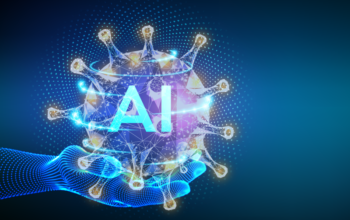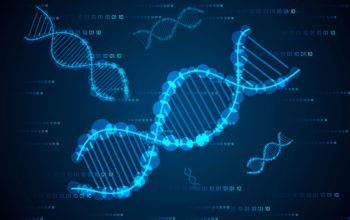
Date: 23rd October 2020
COVID-19 testing has been a key strategy around the world for saving lives, protecting health services and slowing the spread of the virus. However, implementing sustainable tests for the masses has been fraught with problems due to the shear volumes of testing required, this has created large bottlenecks and has often hindered early diagnosis. Now scientists have developed an extremely rapid diagnostic test that detects and identifies viruses in less than five minutes using single-particle imaging and deep learning.
The team of researchers led by Nicole Robb and Achillefs Kapanidis from Oxford University, UK, have developed a test which labelled, imaged and identified SARS-CoV-2 in less than five minutes and did not require any of the time-consuming steps such as lysis, purification or amplification which most of the current tests require.
The test worked directly on throat swabs, and started with the rapid labelling of intact virus particles in the sample with short fluorescent DNA strands which bind via cations to the surface of SARS-CoV-2. The labelled viruses were then immobilised on glass slides, and diffraction-limited images were taken which contained thousands of labelled particles. Machine learning algorithms were used for image analysis which were able to rapidly identify distinct virus types. Different viruses exhibited variances in the distribution of the fluorophore labelling due to their specific surface chemistry, size and shape which the deep learning models could capture and use for identification.
The test was initially validated on lab grown viruses and could distinguish between infectious bronchitis virus and an avian coronavirus, as well as virus positive and negative samples.
The team then went on to assess the test on clinical samples, they used throat swabs from patients negative for virus, positive for SARS-CoV-2, positive for various seasonal coronaviruses or human influenza A. Once trained the network was able to distinguish between virus-positive and virus-negative samples with excellent accuracy, and could identify the other common respiratory pathogens from each other.
Conclusions and future applications
The team here have demonstrated that single-particle imaging combined with deep learning can be used as a rapid, highly accurate test to reliably distinguish between different viruses in clinical samples including SARS-CoV-2. As we move towards winter and the onset of other seasonal respiratory viruses the development of such a test would offer a crucial advantage during this next phase of the pandemic.
The team are now aiming to develop an integrated device that could be used for testing in a wide range of locations such as businesses, airports or schools and could be used to establish COVID-19 free spaces. They are currently working on, and seeking to secure investment, for a spin-out company to provide a real-time diagnostic platform capable of detecting multiple virus threats. The hope is to have an approved device ready by the middle of next year.
The integration of artificial intelligence (AI) and deep learning models into healthcare solutions and applications for fighting the current pandemic over the last few months has been phenomenal. With so many AI-driven solutions being developed, this latest one offers the potential for significant impact in the not so distant future.
For more information please see the press release from Oxford University
Shiaelis, N., A. Tometzki, L. Peto, A. McMahon, C. Hepp, E. Bickerton, C. Favard, D. Muriaux, M. Andersson, S. Oakley, A. Vaughan, P. C. Matthews, N. Stoesser, D. Crook, A. N. Kapanidis and N. C. Robb (2020). “Virus detection and identification in minutes using single-particle imaging and deep learning.” medRxiv: 2020.2010.2013.20212035.
https://doi.org/10.1101/2020.10.13.20212035


